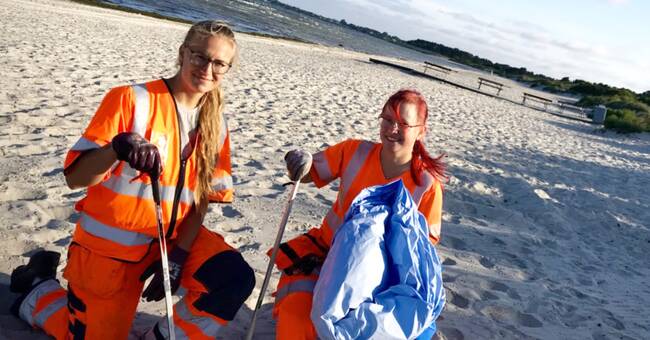The so-called garbage measurement takes place as if every morning at 05.00 a small team of morning beach cleaners arrives.
An area in the size 20 x 100 meters is checked extra carefully and the rubbish is placed in plastic bags and marked with the date and (yesterday's) weather.
- At the beginning of September, we will open the bags and group them into the categories paper, metal, glass and plastic.
If we can then see if certain rubbish comes from a pizzeria, glass kiosk or shop, we can talk to them about what you could do, says Sara Ewald, landscape engineer at Lomma municipality.
It can take a long time for the debris to break down in nature.
- For a fimp, for example, it takes 100 years to rot, says Sara Ewald.
It is especially after the weekends that people are bad at finding a trash can.
There are plenty of fimps.
Every morning, the rubbish is collected in plastic bags and then given a date marking.
Photo: Johan Dernelius
Fimps, fimps and fimps
Klara Norén and Malin Davidsson go back and forth and clean the empty beach.
However, some morning-spirited individuals in bathrobes can be seen tripping on the dunes.
Slowly and methodically, they see every decimeter.
- There are a lot of cigarette butts, paper, wet wipes, different packaging and drinks.
But it's mostly fimps, says Klara Norén as she constantly scans the beach.
- Lomma municipality collaborates with Sysav to make a garbage measurement. We want to investigate where the rubbish comes from, says Sara Ewald, landscape engineer at Lomma municipality. Photo: Johan Dernelius

